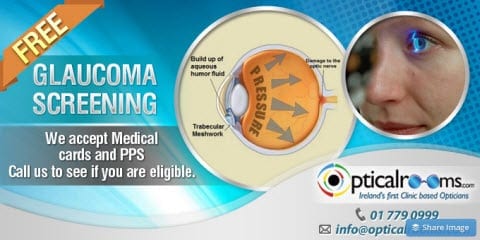Glaucoma is a group of eye conditions with various causes which essentially, if untreated, result in vision loss. It is very commonly characterised as having an internal eye pressure that is too high for that individual eye. It can be classified as primary (no underlying condition) or secondary (associated with another ocular condition). Most types of glaucoma are silent, in that there are no symptoms until a significant amount of damage has been done.
Glaucoma is detected in a routine eye examination or glaucoma screening using three main tests;
– measuring the pressure in the eye,
– measuring the visual field (i.e. peripheral vision) and
– a thorough examination of the optic nerve at the back of the eye.
If detected on time, glaucoma can be very well controlled using eye drops. Just like taking blood pressure medication to reduce blood pressure and prevent stroke, pressure-lowering eye-drops can lower the pressure in the eye to prevent nerve damage and eventual loss of vision.
Occasionally surgical procedures are used to lower the pressure further.
A normal eye pressure reading is between 8 mmHg and 21 mmHg. Some individuals however, will have a pressure reading above this limit and not have glaucoma. Normally this is due to the front surface of the eye, the cornea, being slightly thicker than average. Similarly, a falsely low pressure reading may be obtained from an individual with a thinner than average cornea. Another patient group with a high pressure reading but no loss of vision are classified as being ocular hypertensives.
This means that their high pressure reading is not doing any harm to their eyes, but they are commonly prescribed pressure-lowering eye-drops to prevent any damage in the future.
In each of our clinics we routinely include an examination for glaucoma. Feel free to click on the image above to book your eye test and have a thorough examination.

